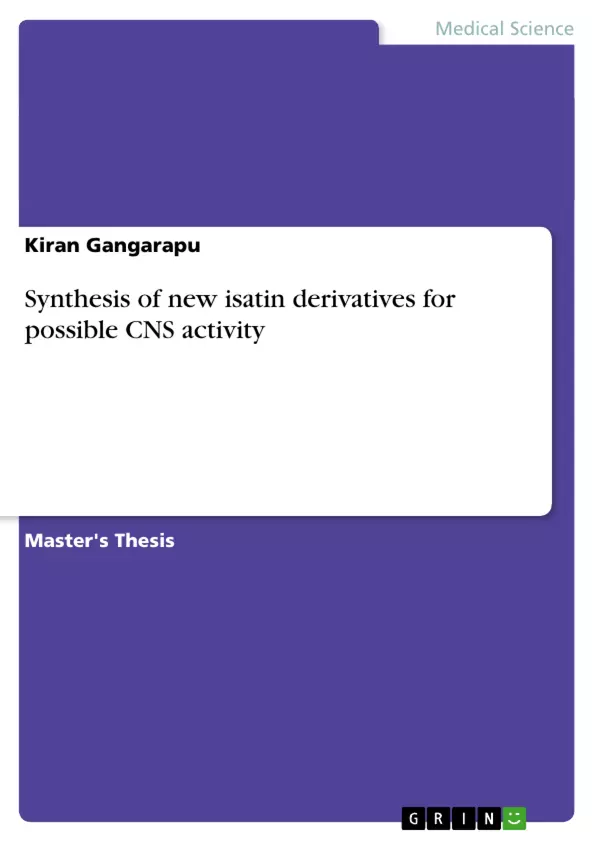Isatin (1H-indole-2,3-dione) (I) was first discovered by Erdmann and Laurent in 1841, independently as a product from oxidation of indigo by nitric and chromic acids.
It is a unique molecule possessing both amide and keto carbonyl groups. Apart from this, it has an active hydrogen atom attached to nitrogen (or oxygen) and an aromatic ring which was substituted at 5- and 7-positions. It exists in a tautomeric form (II) and these functional characteristics play an important role in governing the various reactions of the molecule.
The C-3 carbonyl group of isatin is strongly electrophilic. As a result, isatins are readily involved in condensation and addition reactions with carbanion type nucleophiles into 3-substituted oxindoles. In general, there are three possibilities during condensation reactions.
[...]
Inhaltsverzeichnis (Table of Contents)
- Chemistry of Isatin
- Introduction
- Synthesis of Isatins
- The Sandmeyer Methodology
- The Stolle Procedure
- The Martinet Isatin Synthesis
- The Gassman Procedure
Zielsetzung und Themenschwerpunkte (Objectives and Key Themes)
This document aims to provide a comprehensive overview of the chemistry of isatin, particularly focusing on its synthesis and potential applications. The text delves into various methodologies for the synthesis of isatin derivatives, exploring the advantages and limitations of each approach.
- Synthesis of Isatin Derivatives
- Different Synthetic Methodologies
- Application of Isatin Derivatives
- Role of Substituents on Isatin Reactivity
- Importance of Isatin in Drug Discovery
Zusammenfassung der Kapitel (Chapter Summaries)
- Chemistry of Isatin: This introductory chapter provides a brief overview of the historical discovery of isatin and its unique molecular structure. It highlights the presence of both amide and keto carbonyl groups and an active hydrogen atom, emphasizing the key functional characteristics that govern its chemical reactivity.
- Introduction: The chapter delves into the fundamental properties of isatin, its tautomeric form, and its strong electrophilicity. It outlines the potential reactions of isatin with carbanion type nucleophiles and describes the various possibilities during condensation reactions.
- Synthesis of Isatins: This chapter provides a detailed discussion of different methodologies used for the synthesis of isatin derivatives, beginning with the Sandmeyer methodology and the Stolle Procedure. The text then elaborates on the Martinet Isatin Synthesis and the Gassman Procedure, offering insights into the specific conditions and limitations of each approach.
Schlüsselwörter (Keywords)
Key topics covered in the text include the synthesis of isatin derivatives, various synthetic methodologies like the Sandmeyer methodology, the Stolle Procedure, the Martinet Isatin Synthesis, and the Gassman Procedure. The document also explores the importance of isatin in drug discovery and the influence of substituents on its reactivity.
- Quote paper
- Kiran Gangarapu (Author), 2013, Synthesis of new isatin derivatives for possible CNS activity, Munich, GRIN Verlag, https://www.grin.com/document/271194



